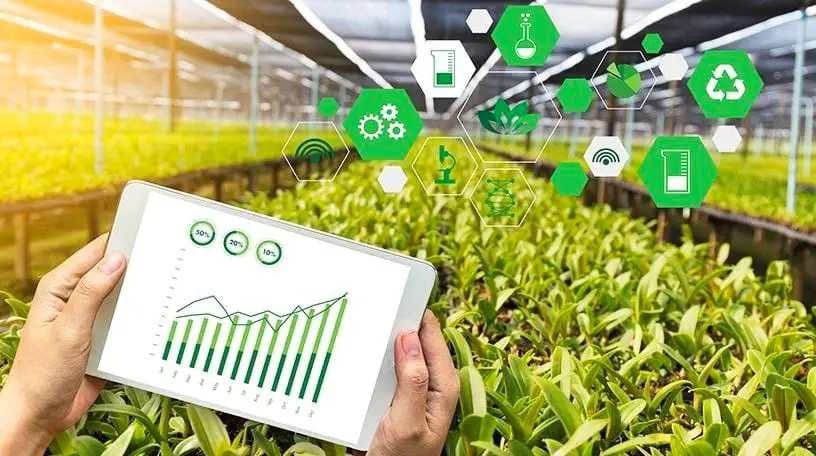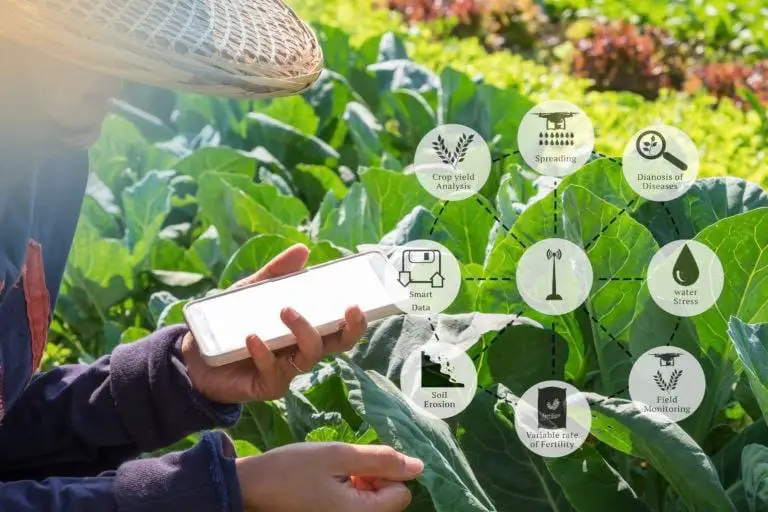Discuss About The Agricultural Development in India.
Agricultural development in India has undergone significant transformations over the decades, driven by policy reforms, technological advancements, and changing socio-economic conditions. The country’s agricultural sector plays a crucial role in the economy, employing over half of the workforce and contributing around 15-17% to its Gross Domestic Product (GDP).
Here’s an overview of the key stages and trends in India’s agricultural development :

1. Pre-Independence Period
Before 1947, Indian agriculture was largely subsistence-based, characterized by traditional practices, low productivity, and feudal land ownership. The focus was mainly on food grains like rice, wheat, and millets, with a heavy reliance on monsoon rains. There was little technological intervention, and agriculture suffered from frequent famines and food shortages.
2. Post-Independence Period (1950-1960s): Land Reforms and Food Security
After independence, the Indian government introduced several land reforms aimed at redistributing land to reduce inequalities and improve agricultural output. Key initiatives included:
- Abolition of the Zamindari system (feudal land ownership).
- Ceilings on land holdings to prevent concentration of land ownership.
- Tenancy reforms to protect the rights of tenant farmers.
However, by the early 1960s, India was facing frequent food shortages, leading to reliance on food imports, mainly from the U.S. through the PL-480 program.

3. Green Revolution (1960s-1980s)
The Green Revolution, which started in the mid-1960s, marked a turning point in Indian agriculture. The primary objective was to achieve self-sufficiency in food grains. It introduced high-yielding varieties (HYV) of seeds, especially for wheat and rice, along with the adoption of modern agricultural techniques. Key features include:
- HYV seeds that significantly boosted productivity.
- Chemical fertilizers and pesticides to improve crop output.
- Irrigation infrastructure, especially the construction of dams and canals to ensure water supply.
- Mechanization with tractors and harvesters.
While the Green Revolution dramatically increased food grain production, especially in states like Punjab, Haryana, and Uttar Pradesh, it also had some negative consequences, such as environmental degradation, depletion of groundwater, and increased regional disparities, as benefits were not uniformly distributed.
4. Diversification and Liberalization (1990s-Present)
With the economic liberalization of India in the 1990s, agriculture started diversifying beyond traditional food grains. Farmers began focusing on high-value crops, horticulture, floriculture, and organic farming. Key developments include:
- Expansion of horticulture with fruits, vegetables, spices, and flowers gaining prominence.
- Growth in dairy, poultry, and fishery sectors, contributing to the rise of non-crop agriculture.
- Agricultural exports, especially of rice, tea, and spices, becoming important for foreign exchange earnings.
- Organic farming gaining traction in response to global and domestic demand for eco-friendly products.
- Technology and innovation, such as precision farming, the use of drones for crop monitoring, and biotechnology, including genetically modified (GM) crops like Bt cotton.
5. Challenges in Modern Agriculture
Despite significant progress, Indian agriculture faces several challenges:
- Small landholdings: Over 85% of Indian farmers are small or marginal farmers, with less than 2 hectares of land, leading to inefficiency in resource use.
- Water scarcity: Over-dependence on groundwater for irrigation, especially in the northwestern regions, has led to a decline in water tables.
- Climate change: Erratic rainfall patterns, droughts, and floods are increasingly affecting agricultural productivity.
- Farmer distress: Low profitability, rising input costs, and limited access to credit and markets have resulted in farmer suicides in some regions.
- Post-harvest losses: Inadequate cold storage and logistics infrastructure lead to significant post-harvest losses, especially in perishable goods like fruits and vegetables.
6. Government Initiatives and Reforms
To address these challenges and promote sustainable agricultural growth, the Indian government has launched several initiatives:
- Pradhan Mantri Fasal Bima Yojana (PMFBY) for crop insurance.
- Pradhan Mantri Krishi Sinchai Yojana (PMKSY) to improve irrigation coverage.
- Soil Health Card Scheme to help farmers understand the nutritional needs of their soil.
- e-NAM (National Agricultural Market) to create a unified national market for agricultural produce.
- PM-Kisan: Direct income support to small and marginal farmers.
- Agri-tech start-ups: Encouraging innovations in farm technology, supply chain management, and digital platforms for market linkages.
7. Future Outlook
Agricultural development in India is moving toward sustainability, digitalization, and market-driven innovations. The integration of climate-resilient crops, renewable energy use in farming, and the rise of agri-tech start-ups are transforming the landscape. Moreover, efforts to improve the income and livelihoods of farmers through better market linkages, contract farming, and access to global markets are seen as critical to ensuring a more balanced and prosperous agricultural sector.
In conclusion, India’s Agricultural Development has seen remarkable progress, but ensuring sustainable growth, addressing environmental concerns, and enhancing the livelihoods of millions of small farmers remain essential for the future.
Share this content:
Leave a Reply